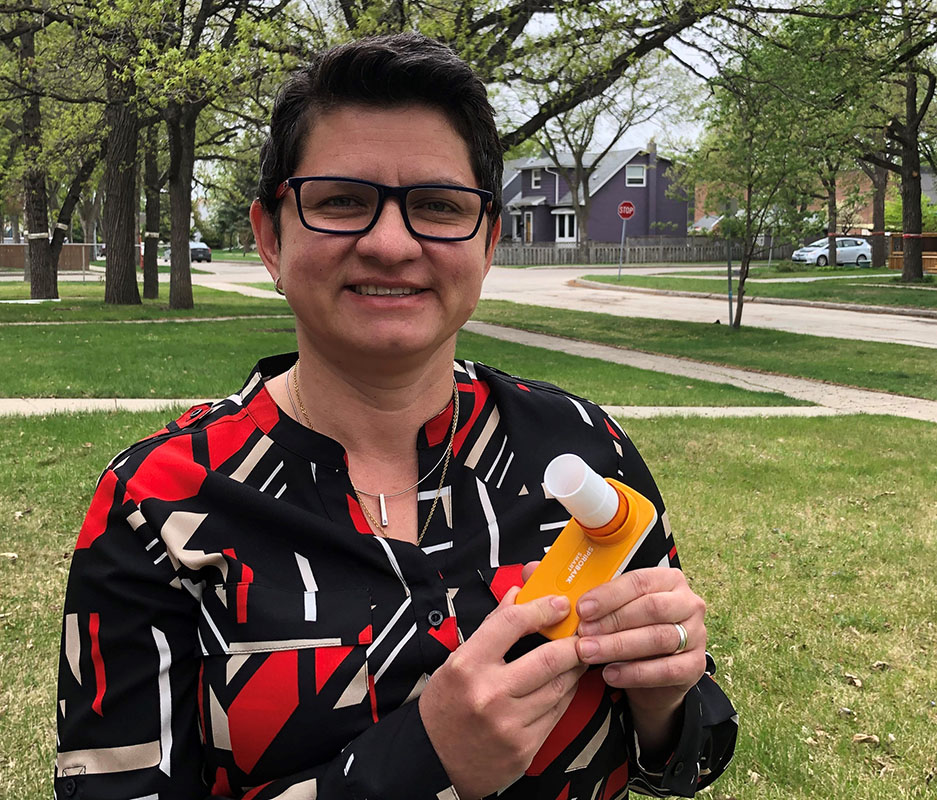
When the first wave of COVID-19 hit Manitoba in March 2020, Dr. Diana Sanchez-Ramirez was less than two months into her position as assistant professor of respiratory therapy in the College of Rehabilitation Sciences.
It was clear that respiratory distress was one of the main causes of hospitalization and death among patients with COVID-19. So Sanchez-Ramirez immediately turned her attention to a study of its effects on people with respiratory illnesses, such as chronic obstructive pulmonary disease (COPD).
“I was concerned about what would happen among people who already have lung disease or are at increased risk for developing it, such as smokers,” she says.
The study, published by the Journal of Respiratory Medicine in July 2020, used a systematic search of literature related to patients with COVID-19 between Jan. 1 and April 15, 2020. “We found that people with COPD are more prone to severe outcomes if they catch COVID, so we’d like to protect them while keeping them safe at home.”
Sanchez-Ramirez is currently focused on assessing the long-term impact of the virus and improving rehabilitation for post-COVID-19 patients, many of whom have continuing symptoms, including fatigue, shortness of breath and chronic cough.
In collaboration with an international research team, she recently published a review of activities of daily living in post-COVID-19 patients and completed another study exploring the long-term effects of the illness.
One of her studies explores the use of virtual platforms and portable devices to engage patients who have interstitial lung diseases (diseases that cause lung scarring and breathing difficulty) in a home exercise program. The devices include spirometers for measuring the amount of air a patient can exhale.
“We can provide patients with basic devices, and assess and supervise them virtually,” the professor says. “But we still need to determine the safety and cost benefits of delivering this at-home program.”
On another project, she will use “smart shirts” that can track multiple cardiorespiratory variables.
Sanchez-Ramirez was born in Colombia, where she earned a bachelor’s degree in physical therapy, and later obtained joint Erasmus Mundus master of public health and PhD degrees supported by the European Union.
She moved to Canada in 2014 for post-doctoral training at the University of Alberta’s Injury Prevention Centre. In 2017, she joined UM as a research director for the continuing professional development program in medicine before moving into her current position.
Her research program aims to find ways to enhance quality of life and participation among people with respiratory diseases. She is particularly interested in helping patients in vulnerable populations, including older adults, Indigenous people, immigrants and those in remote areas.
In a way, she notes, the pandemic has helped move her research forward unexpectedly, particularly in bringing pulmonary rehab to those who had limited access before.
“We knew we needed to explore virtual options, but with COVID we were forced to do it quickly,” she says. “There was an opportunity to be creative, but it also led to identifying knowledge gaps and needs, such as the need to individualize assessment and monitor exercise capacity virtually.”
BY ALAN MACKENZIE
